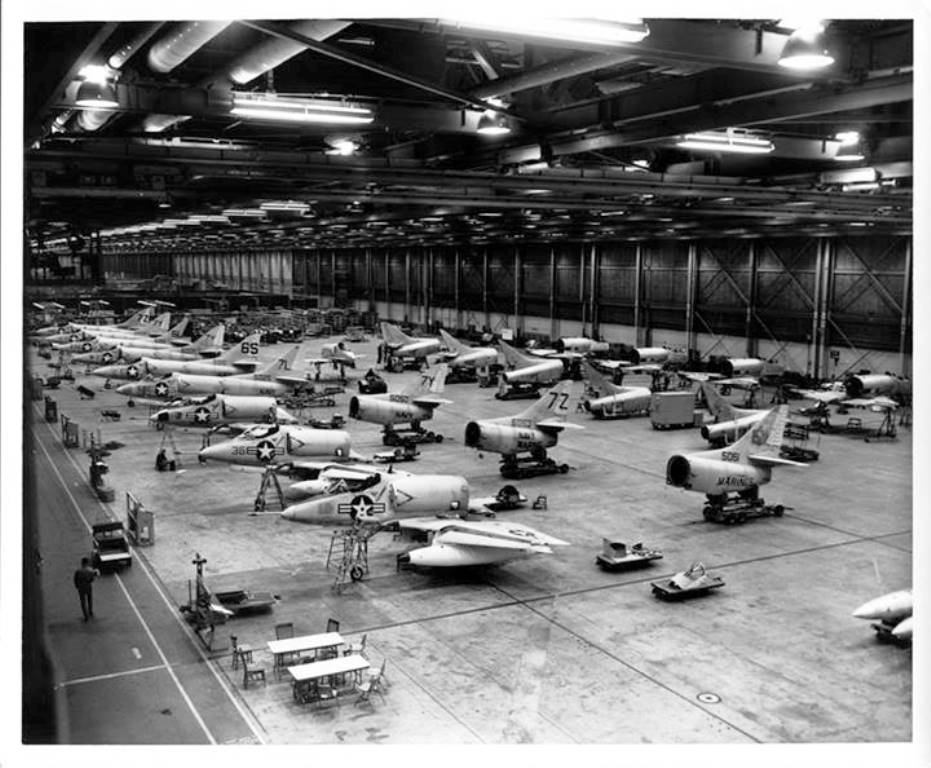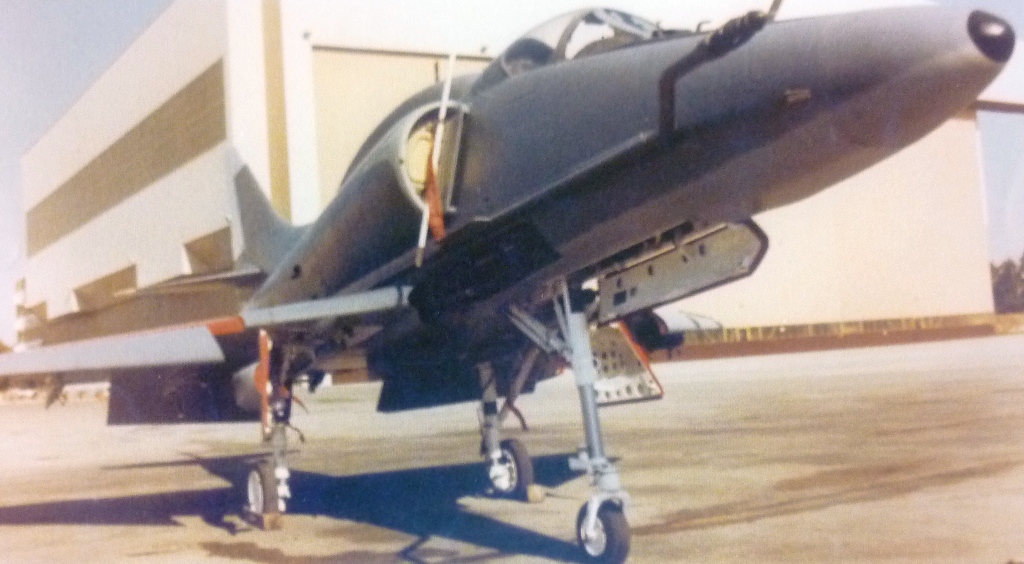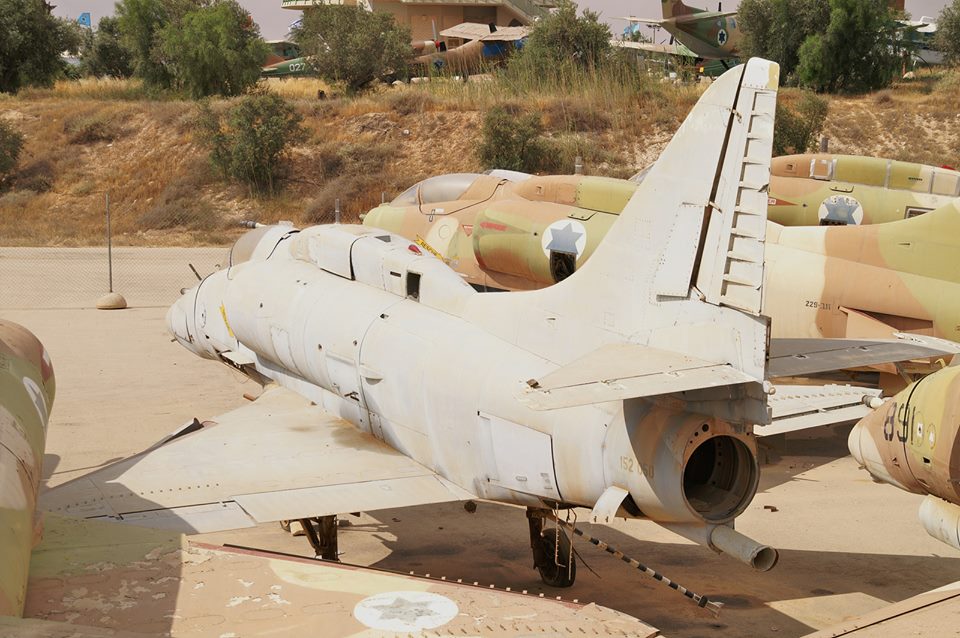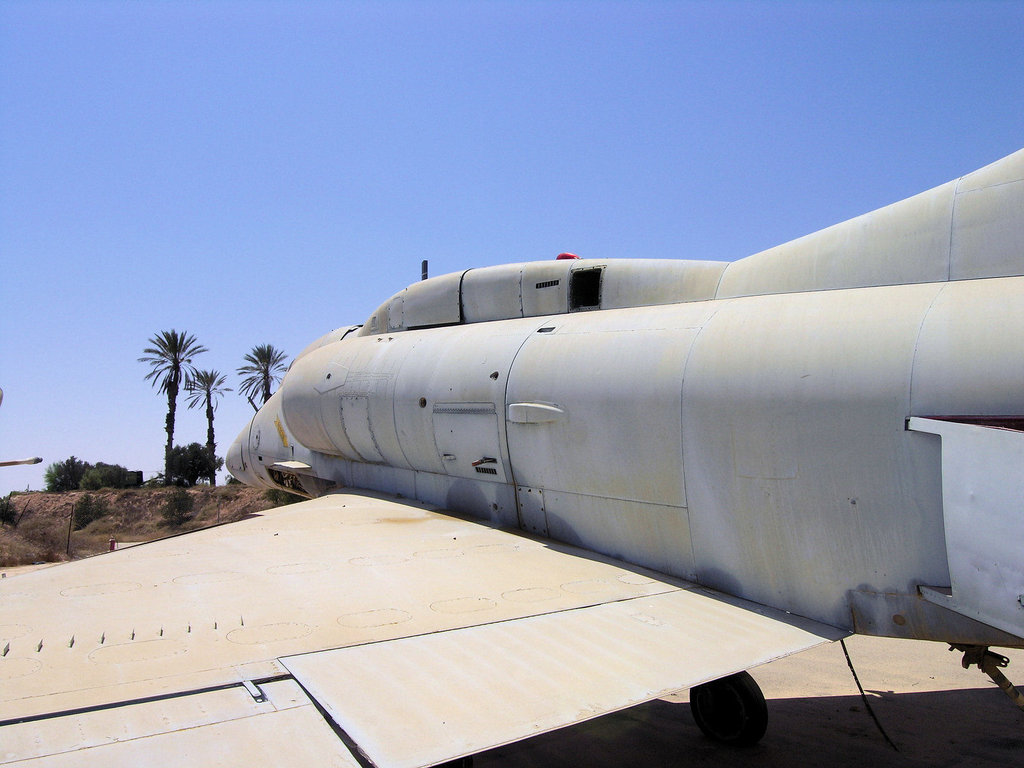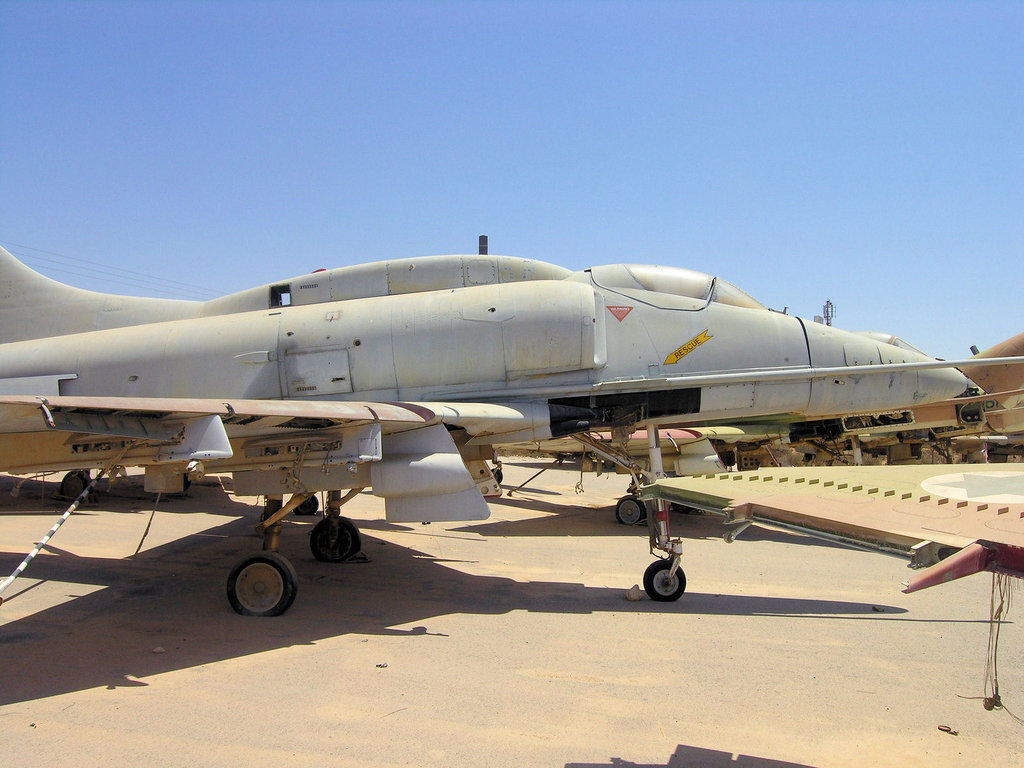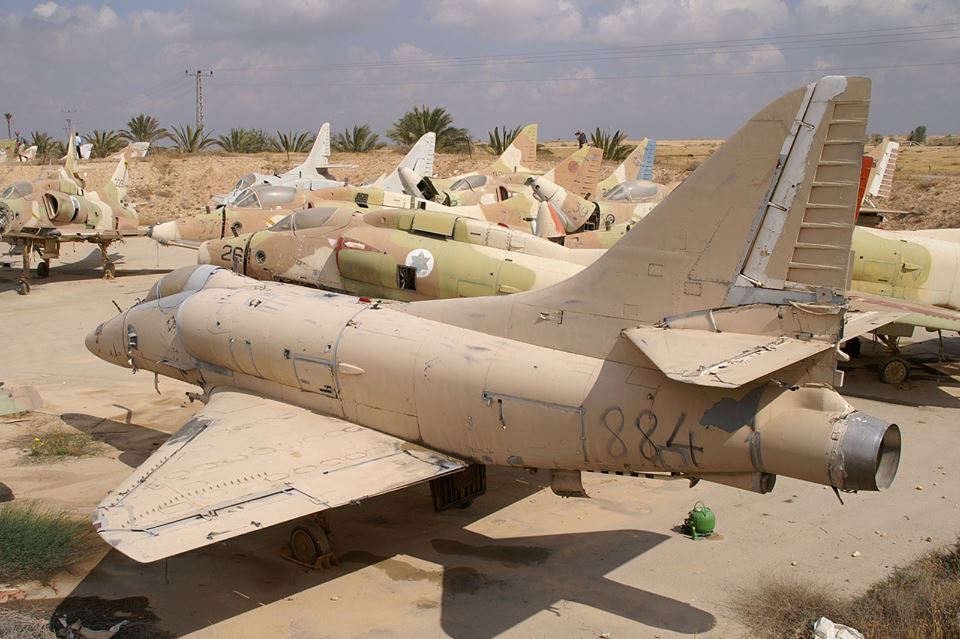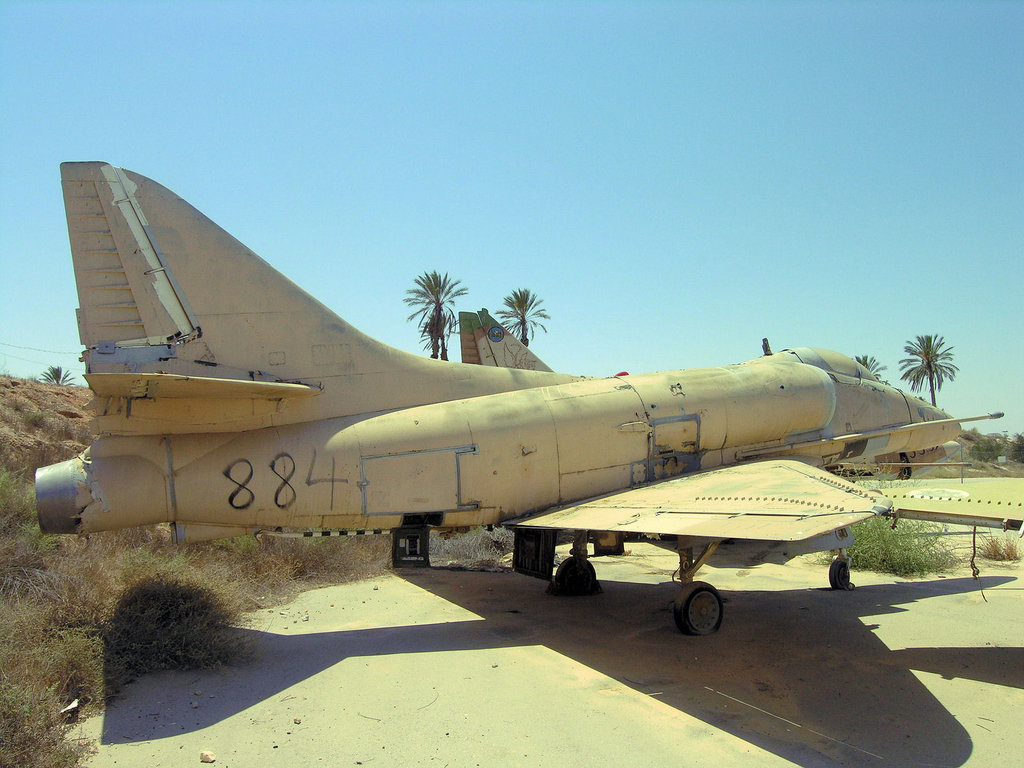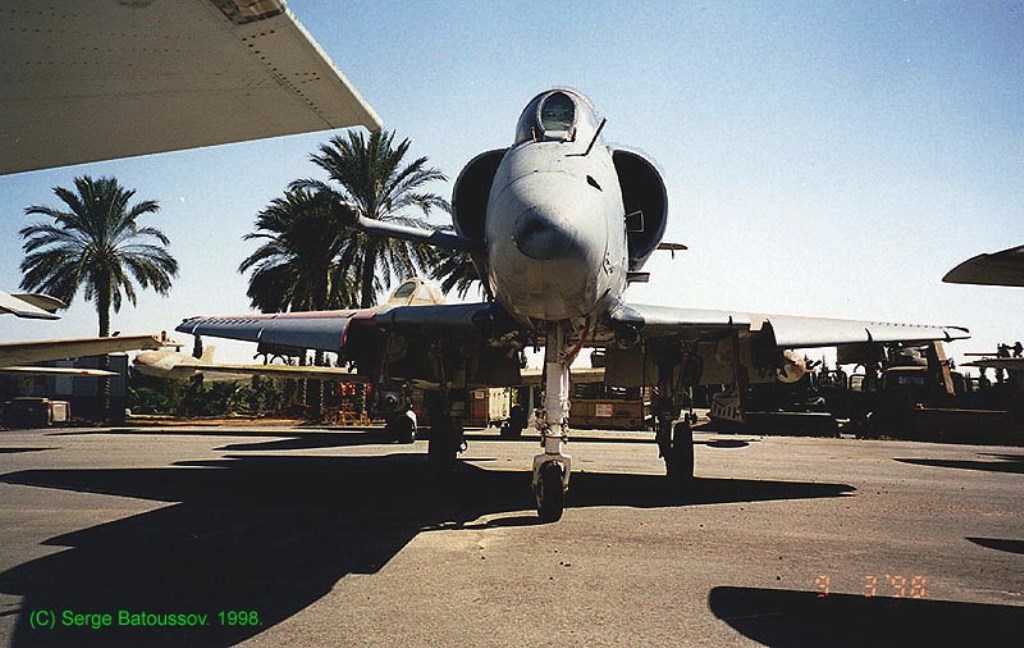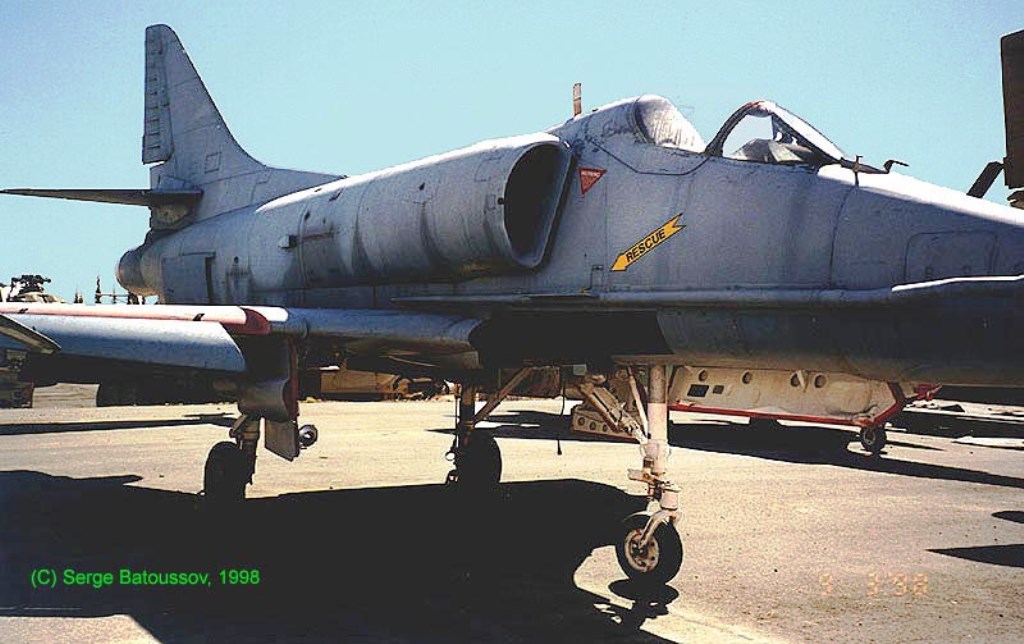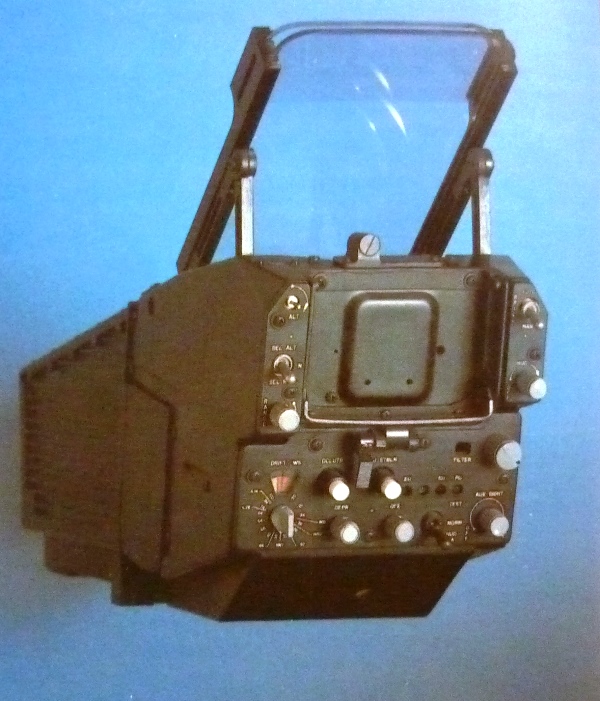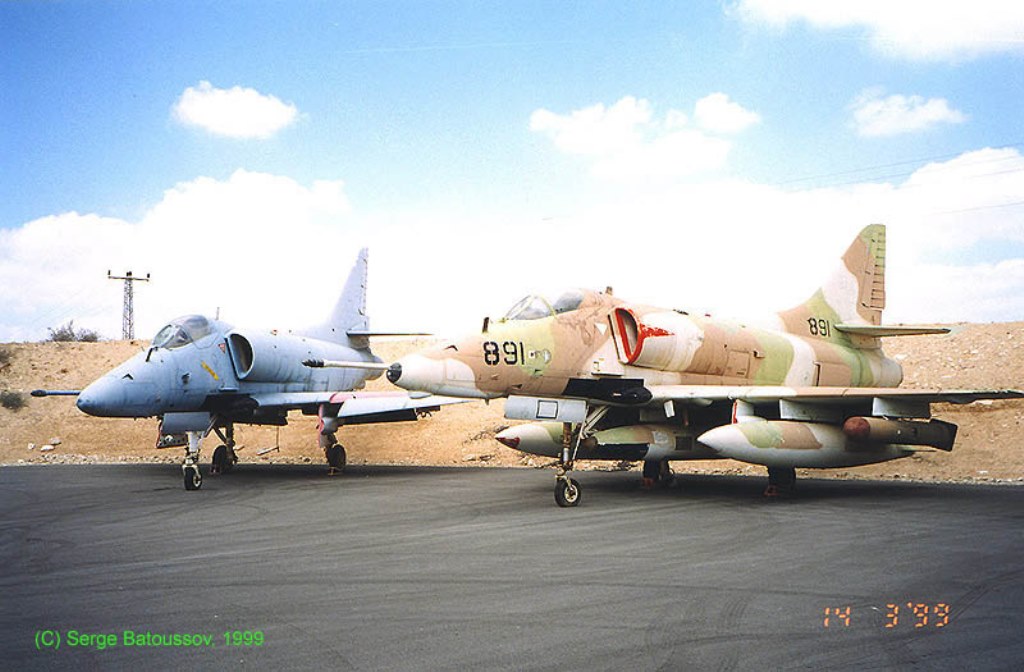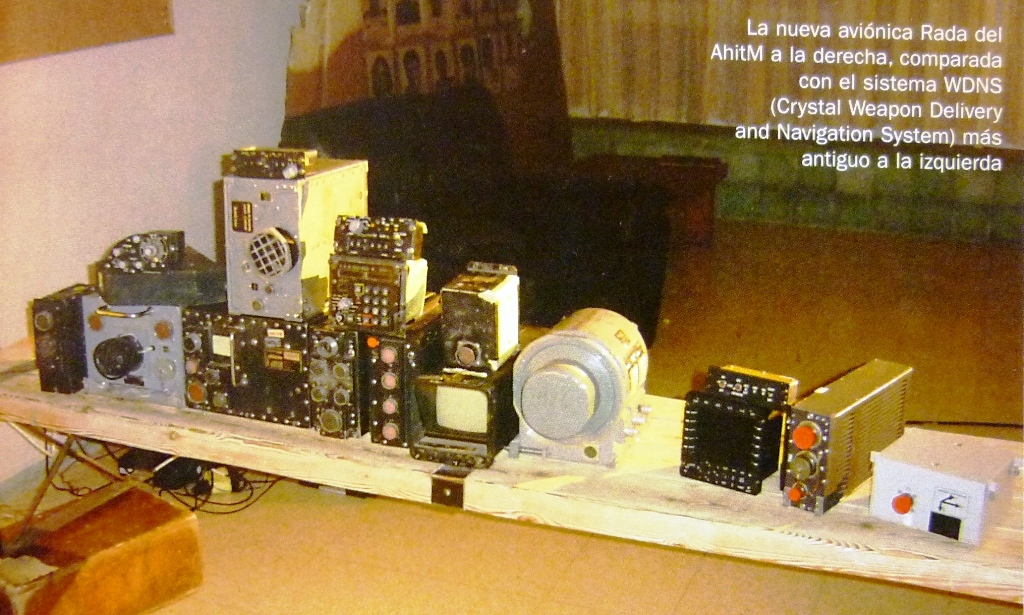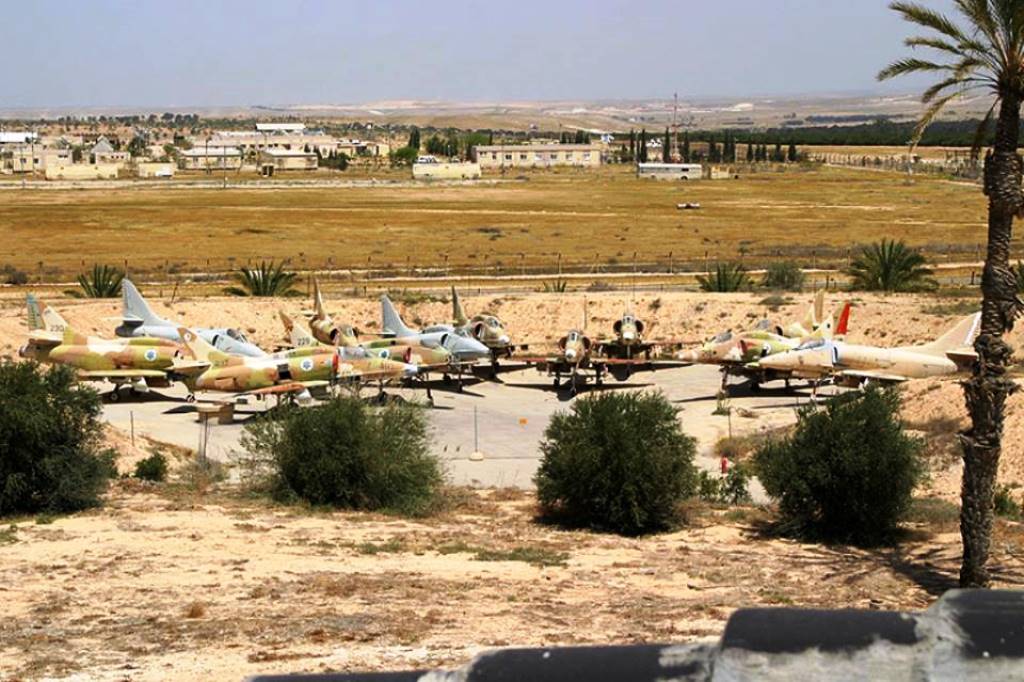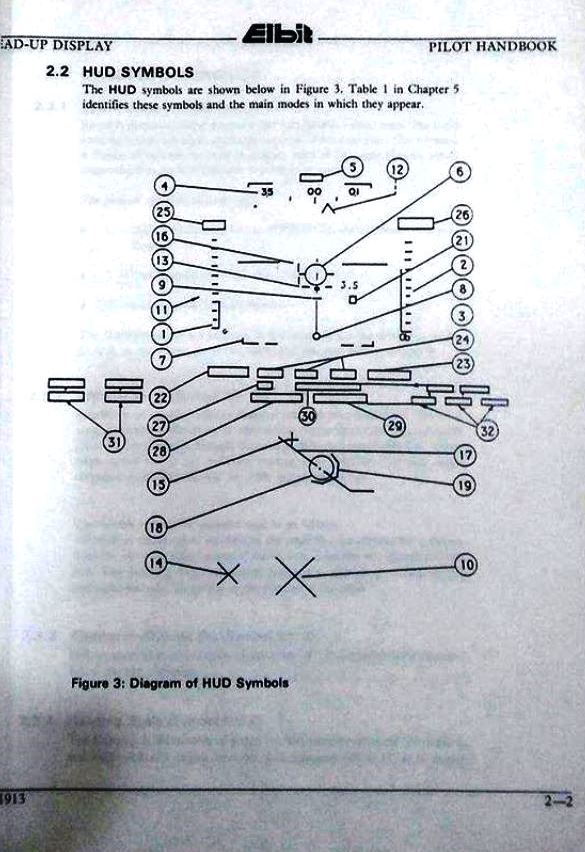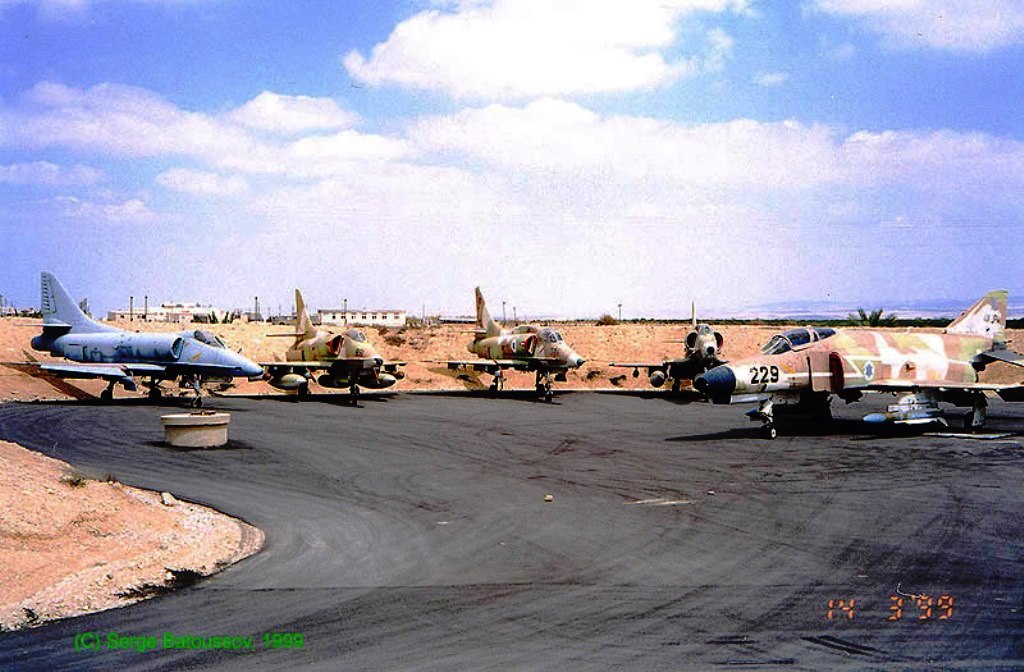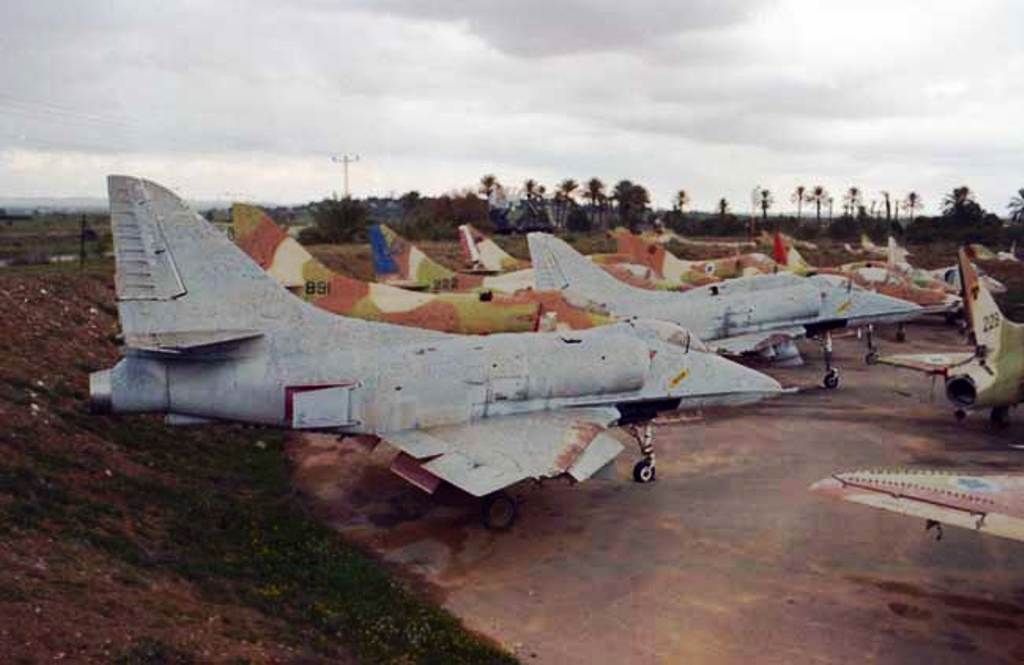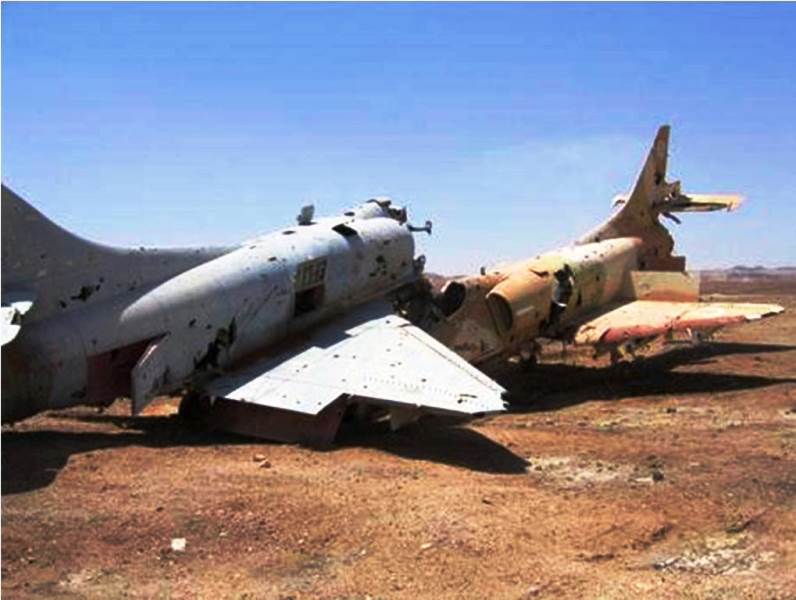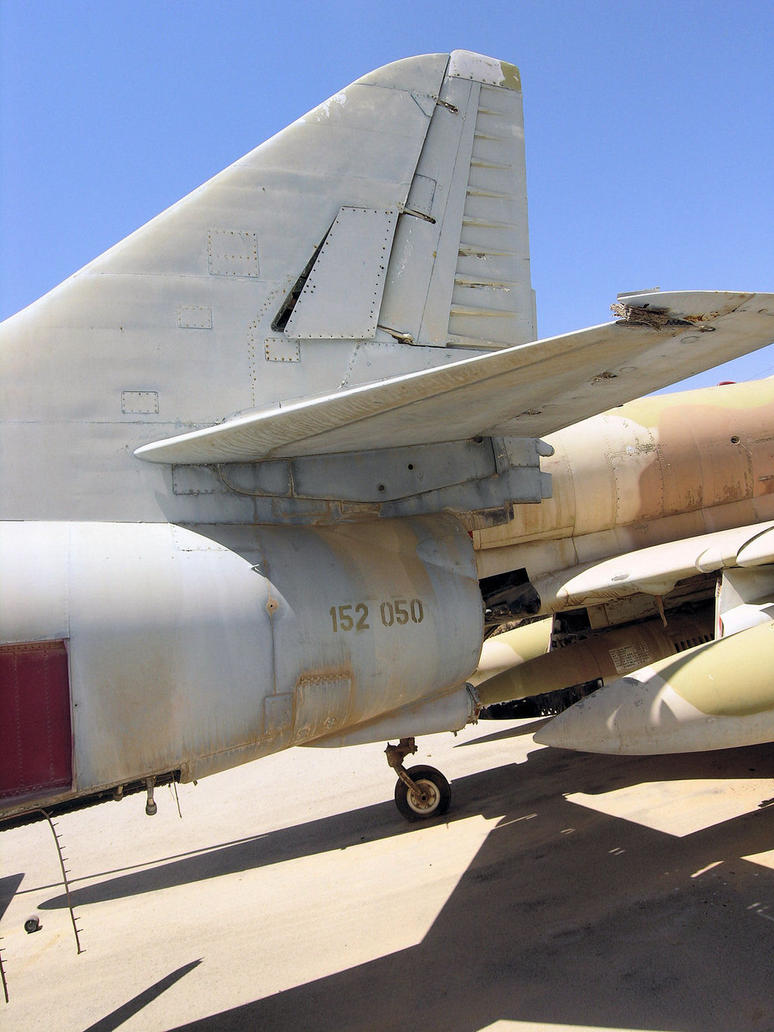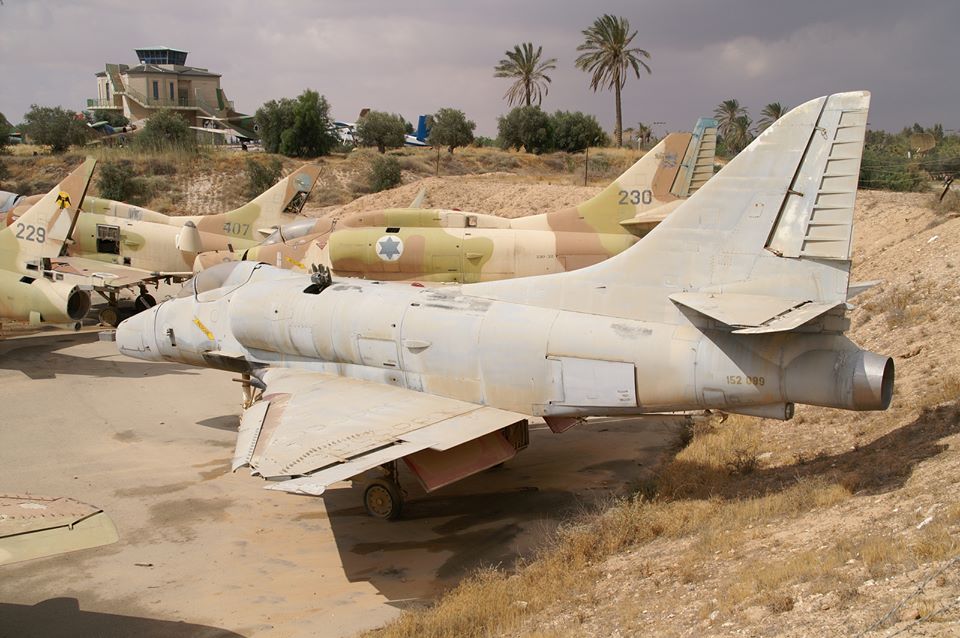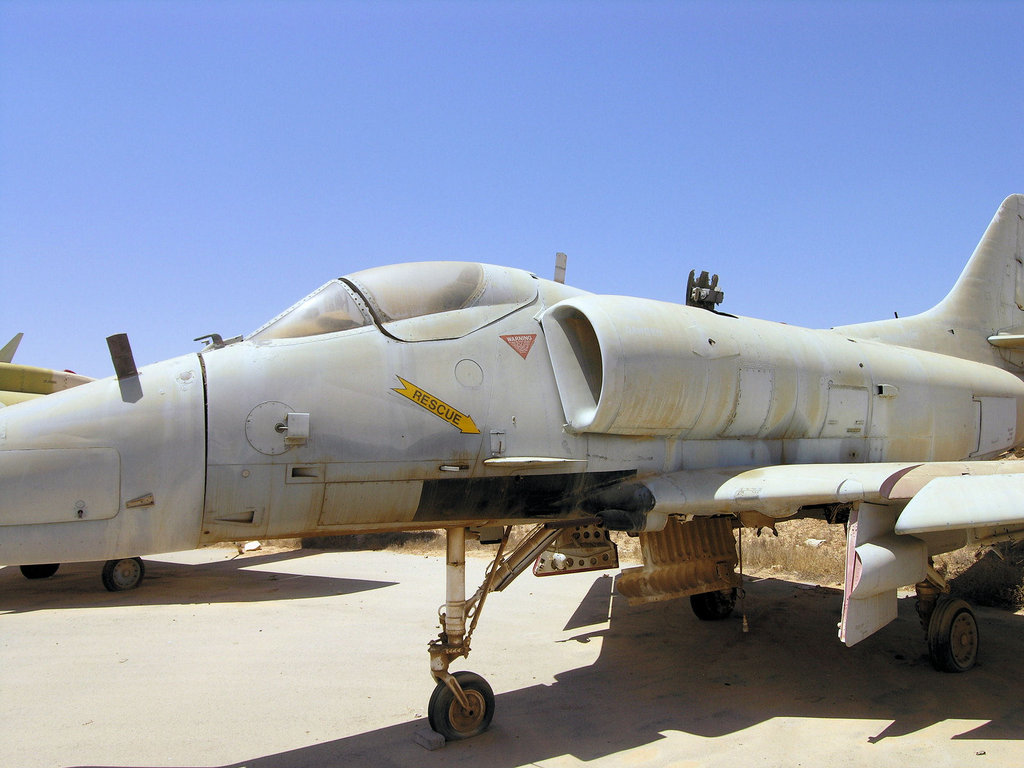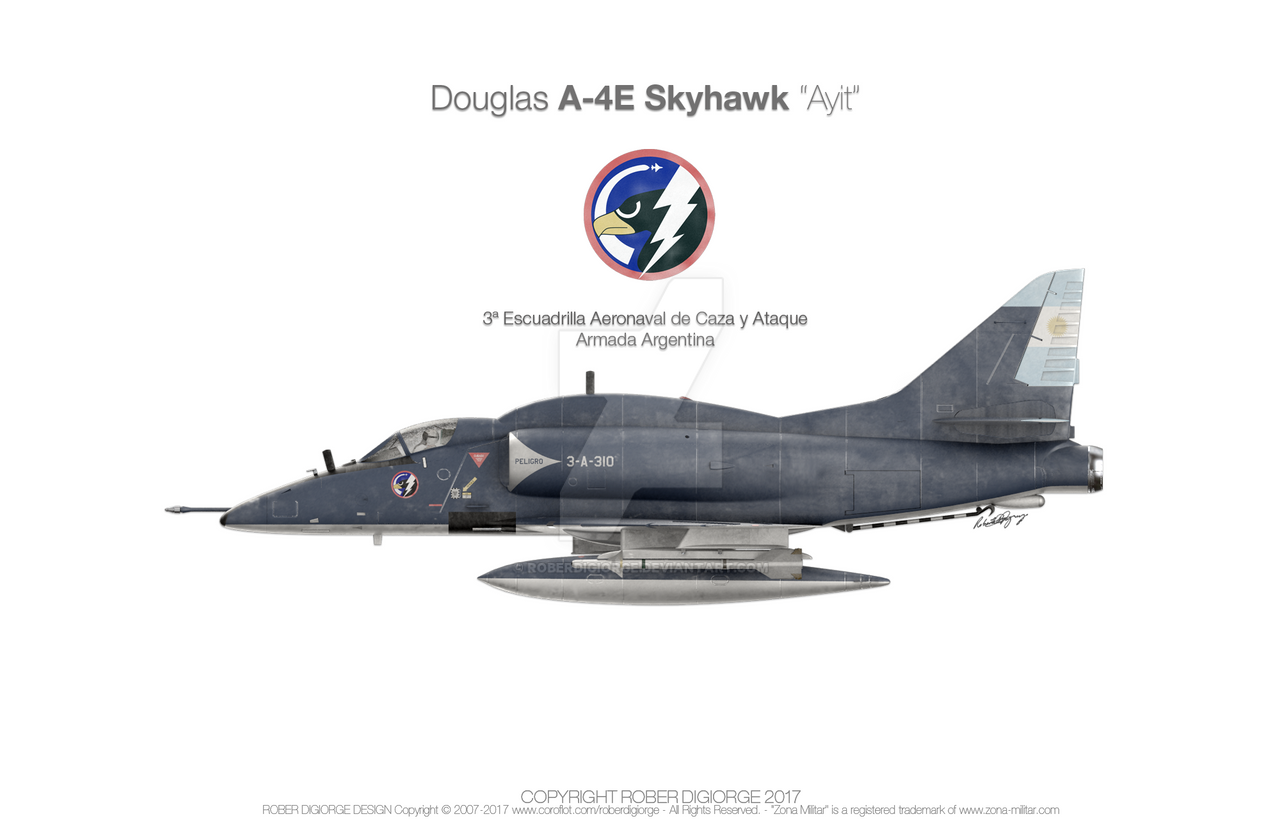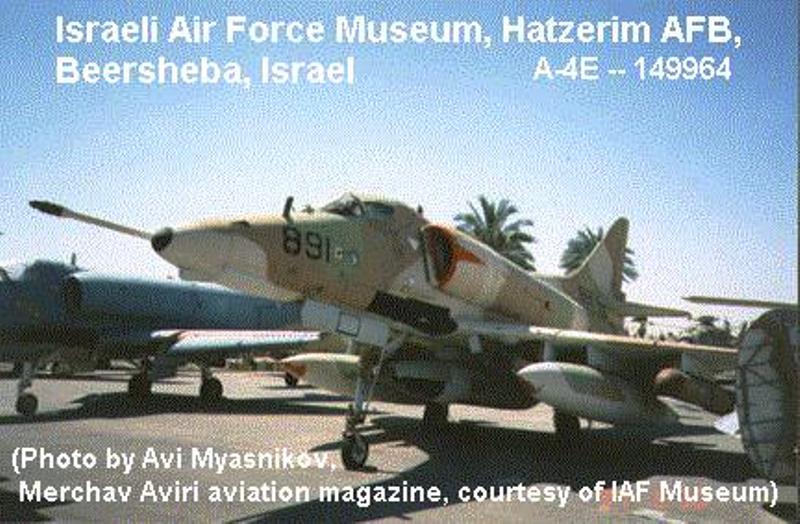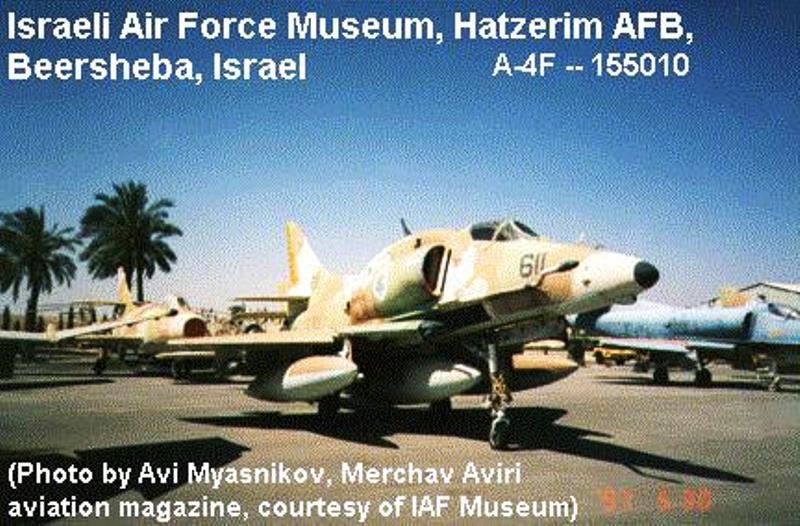https://www.zona-militar.com/…/4e-ayit-halcon-hebreo-del-c…/
La nota sin el link, y con mas fotos,que por cuestión de espacio, no aparecieron en la Revista Digital.
A-4E Ayit, el Halcón Hebreo del COAN que nunca fue.
Usuaria del modelo A-4Q (A-4B originales recorridos a 0hs, y modificados según especificaciones nacionales) comprados a principios de la década del 70, el COAN, venía evaluando la forma de reforzar la flota ya para el año 1974 con la incorporación de aparatos adicionales.
A-4B en proceso de conversión a nivel A-4Q(Douglas Aircraft Company)
En esta oportunidad el modelo seleccionado era el A-4C.
La idea original era la de adquirir veinte aparatos sin recorrer, y obtener el apoyo de la US.Navy para su puesta a punto en Argentina.
Dado que esto último no pudo ser, la empresa Mc Donnell Douglas acercó una propuesta por demás interesante, la que incluía ahora dieciocho A-4C monoplazas y hasta cuatro híbridos TA-4C , estos últimos obtenidos a partir de fuselajes y alas de A-4C unidos a la sección de proa y cabina nuevas de TA-4J. Los cuatro biplazas serían equipados con la misma aviónica de los A-4Q, y todos los trabajos se tendrían que haber realizados en el Taller Aeronaval Central con supervisión de técnicos de la empresa madre.
Los planes estipulaban que los primeros aparatos se tenían que entregar hacia el mes de Febrero de 1976.
Desafortunadamente por falta de fondos, el COAN no pudo realizar los pagos iniciales durante 1974, y a pesar que las células seleccionadas permanecieron en depósito durante todo el año 1975, la operación terminó cancelándose.
En 1977, ya con fondos disponibles, se hace una solicitud por diez A-4F y dos TA-4F, la que no fue tenida en cuenta por las autoridades Norteamericanas.
La poca predisposición de los EE.UU para vender estos aparatos dio por tierra la idea de incorporar más A-4 ,previéndose una disminución gradual de la línea de vuelo a ocho A-4Q a partir de 1979, seis para 1980,pasando la 3° Escuadrilla de Ataque a condición de reserva en el año 1981.
A-4Q a bordo del PAL 25 de Mayo artillado con misiles ATM-9B.
En Julio de 1978 se produce la firma del pre acuerdo de lo que sería más tarde el “Contrato Hook” (Compra de los Super Etendard ), que traería como consecuencia cierta flexibilización en la postura de los EE.UU en cuanto a su política de Armamentos con referencia a la Argentina, prueba de ello fue la inmediata entrega de veinte turbinas J-65-W-20, y la oferta de venta de misiles aire aire AIM-9E,todo esto en clara muestra de acercamiento, y para no perder influencia sobre nuestro país.
Hay que destacar que los EE.UU ya venían obstaculizando la operación de los A-4Q desde hacía un año, al retrasar la entrega de repuestos para estos aviones.
La provisión de estos motores más la entrega de otros repuestos, permitió extender la vida útil de los aparatos en dotación, aunque el problema de base seguía sin solucionarse, fisuras en las alas en algunos aviones, lo que provocaba pérdidas de combustible, y no permitía la operación de los aviones afectados, sobre el portaaviones PAL 25 de Mayo.
Se hicieron algunos intentos durante 1980 por conseguir alas de A-4C con cinco soportes de los excedentes en los EE.UU, que no prosperaron, y dado que para fines de 1981 se esperaba recibir los primeros cinco SuE, se decide desactivar durante el año 1983 a los A-4Q.
La recuperación de las Islas Malvinas sorprendió al Tercera Escuadrilla en su peor momento en cuanto a la disponibilidad de aparatos, con solo tres A-4Q en condiciones de operar, de los diez disponibles.
Dado que EE.UU había decretado un embargo de armas por la Operación Rosario, y en vista a la postura Británica de reconquistar las Isla mediante la utilización de la fuerza, el COAN elaboró planes de contingencia para la obtención de armamento, repuestos y aumentar la línea de vuelo de la Tercera Escuadrilla.
Israel se convirtió en la única salida viable y rápida, capaz poder cubrir los requerimientos de la Fuerza.
La solución israelí.
A-4E BuAer 150092 para el cual se reservó la matricula 3-A-301(Colección Jorge Nuñez Padín)
Con una asignación presupuestaria 86 M de U$$ otorgada en forma inmediata, dada la urgencia, se cerró la Operación Goliat. Ésta consistía en la venta de un lote de dieciséis A-4E Ayit, procedentes de la IAF, pero que se encontraban en reserva.
Ayit BuAer 150050,matricula reservada 3-A-310(Marco Pennings)
Aunque en un principio la operación encontró una muy fuerte resistencia por parte de funcionarios del MdD Israelí, ya que para poder vender esos aparatos había que solicitar permiso a los EE.UU, siendo que la Argentina se encontraba bajo un embargo de armas por parte de ese país, la insistencia por parte de Argentina hizo posible que la operación siguiera en marcha, con el compromiso de que el Estado Nacional se hiciera cargo de solicitar dicho permiso, cosa ésta última, que nunca ocurrió durante esos meses.
A-4E Ayit Bu.Aer 152097. Matricula asignada 3-A-312(Marco Pennings)
Lo cierto es que entre tantas idas y vueltas, el conflicto por la Islas Malvinas había terminado, y ya sin la urgencia de tener estos aparatos y con el 81% del monto de la operación abonado (69.66 M U$$ aprox.) , se disidió renegociar el contrato.
A tal efecto, se redujo la cantidad de aparatos a comprar, de dieciséis a doce, pero a cambio y con un saldo a favor del COAN, se pidió la modernización de estos aviones por parte de la empresa ELBIT con un moderno, para la época, equipo de ataque y navegación.
Ayit sin identificar.
El nuevo programa, denominado ahora, ”Proyecto HOPE” se desglosaba de la siguiente manera;
-U$$ 34 M por la compra de doce aviones.
-U$$ 17.06 M para la puesta en condición de vuelo y modernización de los aviones.
-U$$ 15.8 M por la compra de cinco motores de repuesto, mas repuestos varios para 300 hs de vuelo por avión.
-U$$ 1.5 M por la compra de equipos de apoyo y herramental.
-U$$ 1.3 M por la compra de armamento.
Este programa estipulaba que dos aviones serían acondicionados y modernizados en Israel, mientras que los otros diez serían puestos a punto en el Taller Aeronaval Central, con asistencia de técnicos Israelíes, esto último tenía como objetivo adquirir experiencia y capacitar al personal para hacer trabajos de mantenimientos de hasta el 4° Escalón inclusive.
Pantalla HUD EL-OP del sistema WDNS que hubiera equipado a los A-4E Ayit.
Mientras seguían los problemas para poder obtener la liberación de los aviones, la empresa ELBIT, informaba el 1° de Septiembre de 1985 que se había comenzado con la modernización de los dos primeros A-4E Ayit, y que de no haber inconvenientes, los mismos serían entregados en 1986,fecha que en teoría tendrían que empezar los trabajos sobre los dos primeros aviones en el país, a los cuales se le habían asignado las matrículas 3-A-303 y 3-A-311, los que tendrían que ser seguidos por los 3-A-305,306,307,y 308.
Volviendo al tema de la modernización, la empresa ELBIT, ofreció para tal fin el Sistema de Lanzamiento de Armamento y Navegación (WDNS), mismo equipo que era utilizado por los Kfir C-7, y que estaba siendo instalado en los Kfir C-2, aparte de ser ofrecidos como opción en aviones como los F-5, Mirage o los A-4.
Sin ir más lejos, los M-5 Finger de la FAA adoptaron este sistema, asociado al Radar ELTA 2001B.
Imagen donde se pueden apreciar estacionados y abandonados,tres de los Ayit seleccionados por el COAN.
El WDNS le hubiera permitido al piloto de un A-4E Ayit;
-Navegar y alcanzar el blanco con precisión de acuerdo al Tiempo de Arribo Estimado (ETA).
-Lanzar una gran variedad de armamentos según trayectorias flexibles.
-Obtener información sobre la envolvente de tiro de misiles A/A visualizada sobre la pantalla de proyección frontal.
-Operar en los modos de tiro de cañón “Snap Shoot” y LCOS.
-Lanzar armamento inteligente.
-Antes del vuelo, introducir datos.
-Operar un sistema de gestión de cargas militares, con lanzamiento eficiente y seguro del armamento.
Todo esto en los siguientes modos;
-Aire/aire.
-Aire/tierra.
-Navegación.
Contaba con los siguientes sistemas;
-Computadora Central.
-Computadora de gestión de carga militares.
-Computadora de apoyo.
-Panel de control y visualización de armamento.
-Unidad terminal de control.
-Pantalla de proyección frontal.
Lamentablemente, y a pesar de todos los esfuerzos realizados ya por un gobierno Democrático como el que existía para 1986, el COAN no pudo obtener la transferencia de los aparatos.
Esto no impidió que durante 1985 gran cantidad de repuestos, equipo de apoyo, armamento llegaran al país.
Se destacan entre estos, veinticuatro cascos de vuelo, trajes anti G, tres pods de re abastecimiento en vuelo Sargent-Fletcher 31-300, diez conos de nariz, carros porta bombas, carros porta misiles AGM-65 Maverick

Uno de los diez conos de nariz recibidos,descripción de inventario NA38192668-1
(Jorge Nuñez Padín)
Aunque se analizó muy seriamente instalar los equipos en los A-4Q, los estudios realizados desaconsejaron este trabajo, debido a la poca vida remanente de dicho aviones, no era justificable el grado de inversión requerido.
Desde el punto de vista técnico/operativo, no cabe duda que los A-4E Ayit hubieran sido un digno reemplazo de los nobles A-4Q, y un excelente complemento de los Super Etendard para operar desde el PAL 25 de Mayo.
Los aparatos permanecieron estacionados un tiempo en el aeropuerto Ben Gurion, hasta que fueron trasladados y depositados al aire libre en Hatzerim al menos hasta el año 2008.
Su destino final, fue el de servir de blancos en un campo de tiro de la IAF,un final muy opaco para estos aviones.
Destino final e ingrato para uno de los Ayit que deberían haber llegado al país.
MSN,BuAer, y matrículas asignadas;
MSN. 13145, BuAer. 150092, Matr. 3-A-301
MSN. 13226, BuAer. 151056, Matr. 3-A-302
MSN.13290, BuAer.151120, Matr. 3-A-303
MSN. 13334, BuAer. 151164, Matr. 3-A-304
MSN. 13382, BuAer. 151994, Matr. 3-A-305
MSN. 13407, BuAer, 152019, Matr. 3-A-306
MSN. 13411, BuAer, 152023, Matr. 3-A-307
MSN. 13418, BuAer. 152030, Matr. 3-A-308
MSN. 13432, BuAer. 152044, Matr. 3-A-309
MSN. 13438, BuAer. 152050, Matr. 3-A-310
MSN. 13466, BuAer, 152078, Matr. 3-A-311
MSN. 13485, BuAer, 152097, Matr. 3-A-312
*Existieron dos aparatos más, los BuAer 152090 y 152 099 a los que no se les asignó matricula, pero figuran entre los aparatos seleccionados por el COAN, e inclusive, el 099 recibió la pintura gris azulada similar a la utilizada por los Super Etendard.
A-4E Ayit Bu.Aer 152099. Seleccionado por el COAN,pero sin asignar matricula
Características Técnicas A-4E Ayit (HOPE).
Tipo: Avión embarcado monoplaza monomotor de Caza y Ataque.
Dimensiones: Longitud; 12.99 mts, envergadura; 8.38 mts, alto; 4.57 mts
Performances: Velocidad máxima; 1052 km/h, techo de servicio; 41950 pies, radio de combate; 530 mn/ 2.5 hs.
Planta de poder: Un turbo reactor Pratt & Whitney J-52 P-6 A de 8500 lbs de empuje.
Principales sistemas: Sistema de navegación y ataque Elbit WDNS, Computadora de datos AXC-666, Sistema HUD El Op, Sistema de navegación Crouzet, Sistema de referencia, altitud y vuelo Litton(AHRS), Sistema Doppler Teledyne, IFF AN/APX-73, UHF/DF AN/ARA-50, UHF/VHF AN/ARC-109, ADF DF-203, Altímetro radar, Asiento Douglas Escap 1 A-1.
Armamento: dos cañones IMI/DEFA de 30 mm con 150 proyectiles c/u. Cinco estaciones externas para un total de 3720 kg de carga para diferentes combinaciones de bombas. Coheteras LAU-10 AA Zuni, LAU 68/131, LAU 69 A. Misil Aire superficie AGM-65 A Maverick, Misiles infrarojo tipo AIM-9 E/J.
Pod fotográfico Vicon 18. Pod de reabastecimiento en vuelo Sargent Fletcher 31-300
En ambas fotos, y en segundo plano, se llega a ver uno de los A-4E Ayit seleccionados por el COAN




